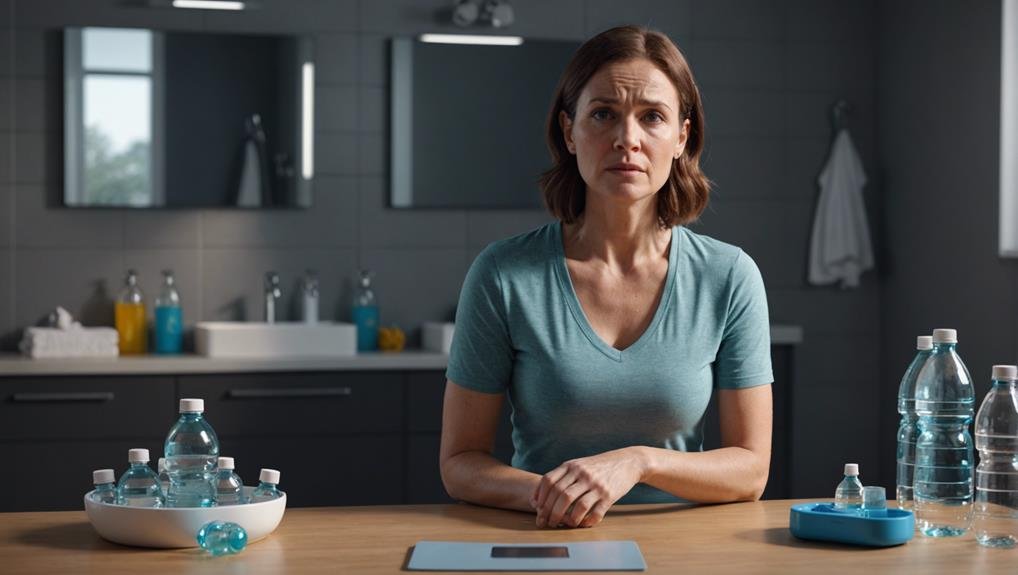Bladder Woes Unveiled: Infections, Incontinence, and More
Bladder troubles, ranging from infections to incontinence, present significant challenges that many individuals face. The impact of these conditions on daily life can be profound, making effective management strategies essential. From understanding the nuances of bladder infections to exploring tailored treatment options for incontinence, there is a wealth of information to uncover. By delving into preventive measures and coping mechanisms, individuals can gain valuable insights into maneuvering through the complexities of bladder health.
Key Takeaways
- Maintain bladder health with hydration, hygiene, and cranberry juice.
- Treat urinary incontinence with tailored exercises, behavioral techniques, and lifestyle changes.
- Manage UTIs with timely antibiotics, fluids, probiotics, and herbal remedies.
- Address different types of incontinence with specific strategies like pelvic floor exercises and bladder training.
- Prevent recurrent bladder issues through lifestyle modifications, dietary changes, herbal remedies, and alternative therapies.
Understanding Bladder Infections
Bladder infections, also known as cystitis, are commonly caused by abnormal bacterial growth and can lead to a range of uncomfortable symptoms affecting the urinary system. Symptoms of bladder infections include frequent urination, urgency, pain while urinating, and blood in the urine.
Prevention strategies for bladder infections involve staying hydrated, practicing good hygiene, and urinating after intercourse to flush out bacteria. Avoiding irritants like caffeine and alcohol, as well as wearing breathable underwear, may also help prevent infections. Cranberry juice is often suggested for prevention, although more research is needed to confirm its importance.
Early recognition of symptoms and prompt medical treatment with antibiotics are essential in managing bladder infections effectively.
Managing Urinary Incontinence
When addressing urinary incontinence, a vital approach encompassing different treatment modalities tailored to the specific type and severity of the condition is essential for effective management.
Pelvic floor exercises, commonly known as Kegel exercises, play a pivotal role in strengthening the pelvic floor muscles, especially in cases of stress incontinence where these muscles are weakened. These exercises help improve bladder control and reduce leakage episodes.
Additionally, behavioral techniques such as bladder training can assist individuals in regaining control over their urinary function. Lifestyle modifications, like maintaining a healthy weight and avoiding bladder irritants, complement these strategies.
For more severe cases, medications or surgical interventions may be considered, depending on the underlying cause and individual response to conservative treatments.
Treatment Approaches for UTIs
Effective management of urinary tract infections typically involves targeted antibiotic therapy based on the specific bacterial strain causing the infection. When dealing with UTIs, it is crucial to contemplate various treatment approaches to guarantee successful resolution of the infection.
Here are some key points to ponder:
- Timely Antibiotic Administration: Prompt initiation of antibiotic therapy can help prevent the spread of the infection and reduce the risk of complications.
- Fluid Intake: Increasing fluid intake can help flush out bacteria from the urinary tract and promote healing.
- Probiotics: Incorporating probiotics into the diet may support the restoration of healthy bacteria in the urinary tract.
- Herbal Remedies: Some natural remedies, such as D-mannose and cranberry extract, are believed to have potential benefits in preventing and managing UTIs.
Coping With Incontinence Types
Management Strategies for Different Types of Urinary Incontinence vary based on the underlying causes and severity of symptoms.
For stress incontinence, which often occurs in women due to weakened pelvic floor muscles, pelvic floor exercises like Kegels can help strengthen the muscles and improve bladder control.
Urgency incontinence, characterized by a sudden and overwhelming urge to urinate, may benefit from bladder training techniques to increase the time between urges. Lifestyle changes such as managing fluid intake and avoiding bladder irritants like caffeine and alcohol can also be beneficial.
In cases of mixed incontinence, a combination of treatments tailored to address both stress and urgency symptoms may be recommended.
Overflow incontinence, where the bladder doesn't empty completely, may require interventions to address the underlying causes, such as treating blockages or underlying medical conditions.
Preventing Recurrent Bladder Woes
To prevent recurrent bladder issues, implementing proactive measures tailored to individual needs is essential. When it comes to preventing bladder problems from recurring, there are several strategies that can be beneficial:
- Lifestyle modifications: Incorporating regular exercise, maintaining a healthy weight, and practicing pelvic floor exercises can help improve bladder health.
- Dietary changes: Avoiding bladder irritants such as caffeine, alcohol, and spicy foods can reduce the risk of bladder irritation and infections.
- Herbal remedies: Some herbs like cranberry extract and D-mannose have been suggested to promote bladder health and prevent recurrent infections.
- Alternative therapies: Acupuncture, biofeedback, and hypnotherapy have shown promise in managing bladder issues and reducing the likelihood of recurrence.
Conclusion
To sum up, managing bladder issues such as infections and incontinence requires a multifaceted approach involving preventive measures, tailored treatments, and lifestyle modifications.
While some may argue that these conditions are inevitable with age, proactive strategies can effectively mitigate their impact on daily life.
By staying informed and implementing personalized strategies, individuals can navigate the challenges posed by bladder problems with confidence and improved quality of life.







